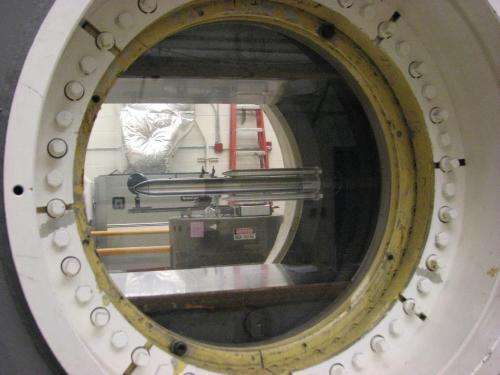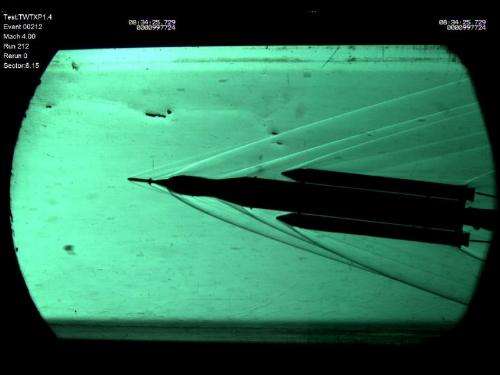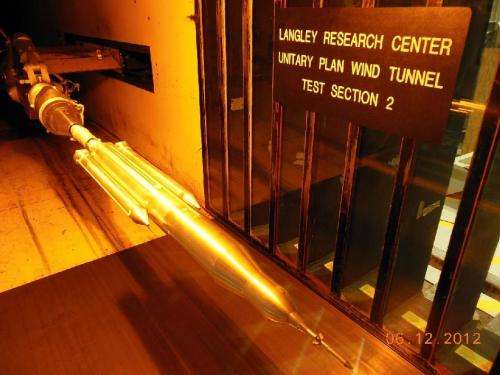Smooth sailing: Space launch system giving Marshall, Langley wind tunnels a workout

Launching rockets is no easy or inexpensive task. Developers must consider the ground support infrastructure, fuel elements and flight hardware itself; not to mention the safety of everyone involved.
Since well before the inception of NASA, engineers used wind tunnels and scale models to test how vehicles would respond and interact with the atmosphere. At the Marshall Space Flight Center in Huntsville, Ala., and Langley Research Center in Hampton, Va., engineers are using wind tunnel testing to enhance the development of NASA's Space Launch System, a heavy-lift launch vehicle that will propel science and human exploration into deep space and launch NASA's Orion spacecraft to expand human presence beyond low Earth orbit.

Engineers at Marshall's Trisonic Wind Tunnel have spent the past four months putting early SLS scale models through more than 900 tests of various crew and cargo configurations.
"We need to evaluate all the possible conditions that the launch vehicle may encounter as it traverses the atmosphere," said John Blevins, SLS lead engineer for aerodynamics and acoustics. "We look at many different configurations and designs of the same rocket, discovering how it reacts under variations in flight conditions. It is a very busy and exciting time for us."

The Trisonic Wind Tunnel is testing the flight stability of SLS, providing the initial configuration testing and the basis to assess flight stability. Testing on a larger geometric scale at Langley's Unitary Plan Wind Tunnel and tests planned for Boeing's Polysonic Wind Tunnel in St. Louis will improve understanding of the vehicle's aerodynamics as the design matures. The Langley facility can accurately test limits of rocket designs, but only at speeds above Mach 1.5. The Boeing facility will be used for the lower Mach conditions on the larger model. At Marshall, tests are conducted to determine how the designs respond to roll, pitch and yaw at speeds from Mach 0.3 to Mach 5. The data from both tunnels will be merged to evaluate the design's performance, guidance and control.
"Once we analyze the data, we can determine the best configuration and refine our design of the vehicle," said SLS Chief Engineer Garry Lyles. "Any changes can be made safely, easily and inexpensively before the full-scale version is built. This helps ensure that SLS is an affordable and sustainable capability for human space exploration beyond low Earth orbit."
On a larger scale, engineers use wind tunnels to evaluate unsteady aerodynamic effects that can cause vehicle vibrations and resonance. The biggest SLS wind tunnel model test to date is scheduled for mid-September. Langley's Transonic Dynamics Tunnel will test the first large scale integrated model—a 12-foot-long version of the heavy-lift rocket to evaluate these unsteady aerodynamic phenomena.
Provided by NASA

















